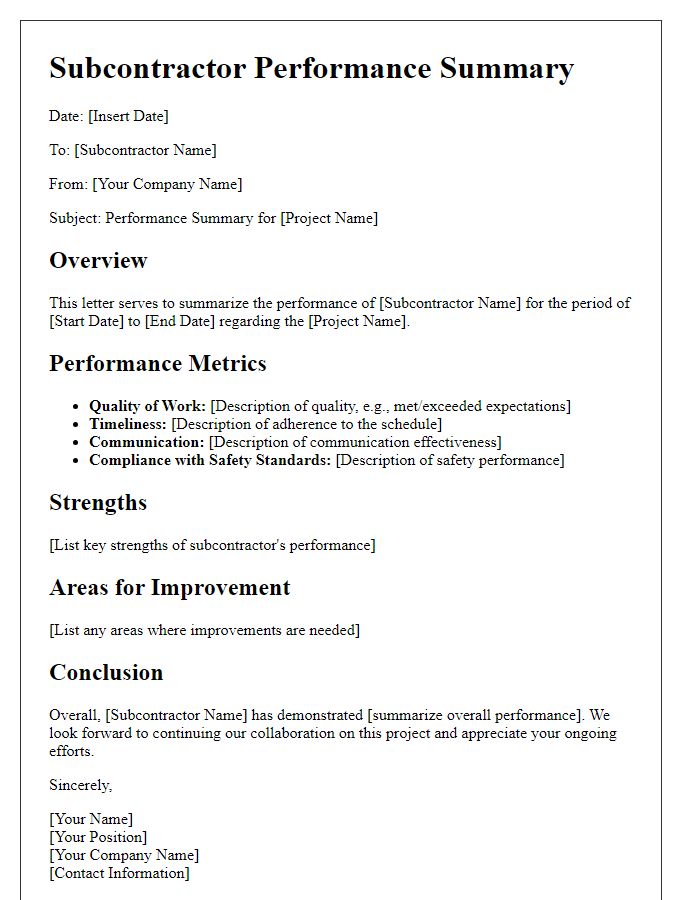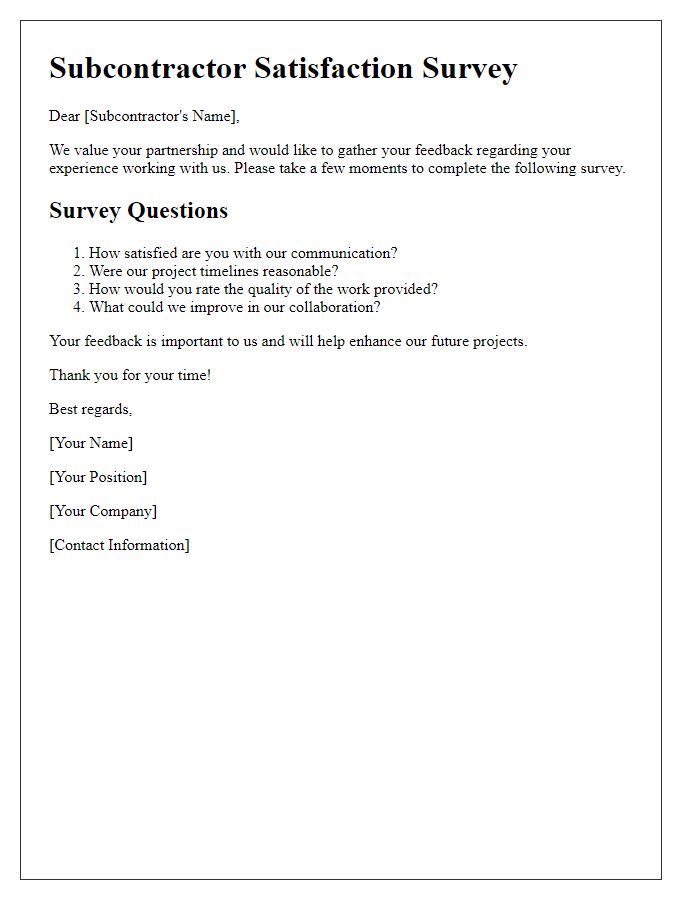Welcome to our guide on subcontractor contractor evaluations! In today's competitive landscape, it's crucial to assess the capabilities and reliability of your subcontractors to ensure project success. This evaluation process not only helps in selecting the right partners but also fosters collaboration and accountability. Ready to dive deeper into effective evaluation strategies? Join us as we explore best practices and templates that can streamline your assessment process!

Introduction and Purpose
The contractor evaluation process plays a crucial role in ensuring collaboration efficiency in contractor-subcontractor relationships. Establishing a clear evaluation framework helps organizations like ABC Construction Company assess the performance of subcontractors who deliver specialized services, such as plumbing or electrical work, in ongoing projects. The primary goal is to create a transparent system that focuses on quality, timeliness, and compliance with project specifications, enhancing overall project outcomes while ensuring accountability and fostering continuous improvement. Such evaluations contribute to the strategic decision-making process for future subcontracting, ultimately aiming to maintain high standards in the construction industry.
Performance Criteria
In subcontractor evaluations, performance criteria encompass aspects such as adherence to project timelines, quality of workmanship, financial management, safety compliance, and communication effectiveness. Timeliness dictates that subcontractors meet specified milestones and deadlines, crucial for overall project success. Quality of workmanship is assessed through inspections and compliance with industry standards, often referencing local building codes or client specifications. Financial management includes budgeting accuracy and timely invoicing, impacting overall project profitability. Safety compliance involves adherence to Occupational Safety and Health Administration (OSHA) guidelines, crucial for minimizing workplace accidents. Communication effectiveness evaluates promptness in information exchange and responsiveness to concerns, fostering a collaborative work environment critical for project advancement.
Scoring and Ratings
Subcontractor evaluation plays a crucial role in assessing performance and ensuring quality in construction projects. The scoring and ratings system, typically ranging from 1 to 5, provides a quantifiable measure of key performance indicators, such as quality of work, adherence to schedules, and communication effectiveness. Regular assessments, often conducted quarterly or biannually, allow project managers to monitor subcontractor compliance with safety regulations, material standards, and budget constraints. Detailed criteria include workmanship (measurement of finishes and overall quality), timely completion (adherence to project timelines), and cost management (ability to deliver within budget). This structured approach aids in making informed decisions regarding future contracts and identifying areas for improvement to enhance collaboration.
Detailed Feedback
Comprehensive subcontractor evaluations provide essential insights essential for project assessments and future collaborations. A high-performing subcontractor can significantly impact project timelines, quality, and overall costs. Key performance indicators, such as adherence to schedule (percentage of tasks completed on time), quality of workmanship (defect rates in deliverables), and communication effectiveness (frequency of updates and responsiveness), must be thoroughly analyzed. Specific examples, like successful project completions (e.g., the ABC Construction project in 2022), highlight areas of excellence. Additionally, collaboration challenges, like discrepancies in project scope or material delays, should be noted for improved partnerships in future projects. Evaluations will guide decision-making, ensuring that reliable subcontractors contribute positively to overall project success.
Next Steps and Recommendations
The subcontractor evaluation process is crucial for maintaining high standards in project management and quality assurance. Key factors such as compliance with project timelines, adherence to safety regulations, and overall workmanship quality must be thoroughly assessed. Recommendations for enhancing collaboration include establishing regular communication checkpoints, scheduling site visits, and implementing a detailed reporting system to monitor progress and address issues proactively. Next steps involve drafting a formal evaluation report that includes specific action items based on the assessment findings, ensuring that all stakeholders are engaged in the improvement plan, and setting up a follow-up meeting within 30 days to review progress and make necessary adjustments.













Comments